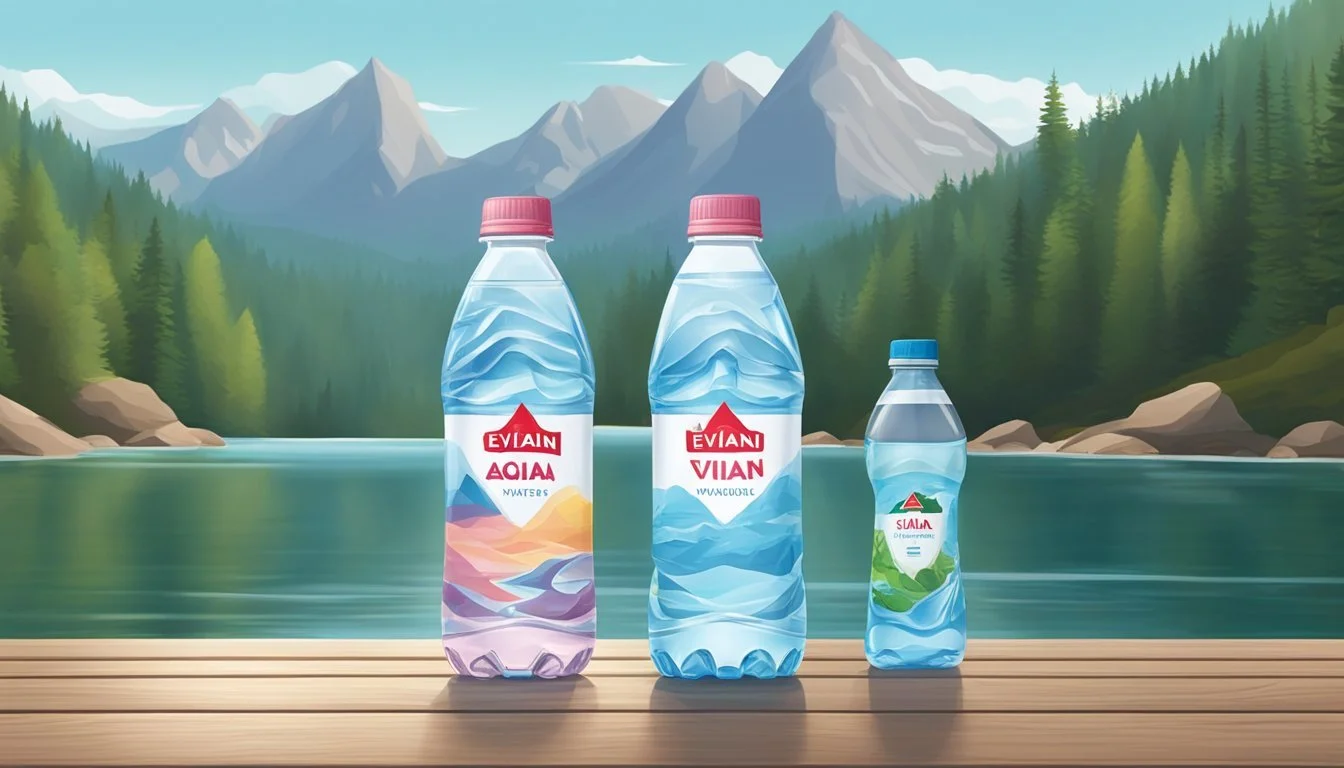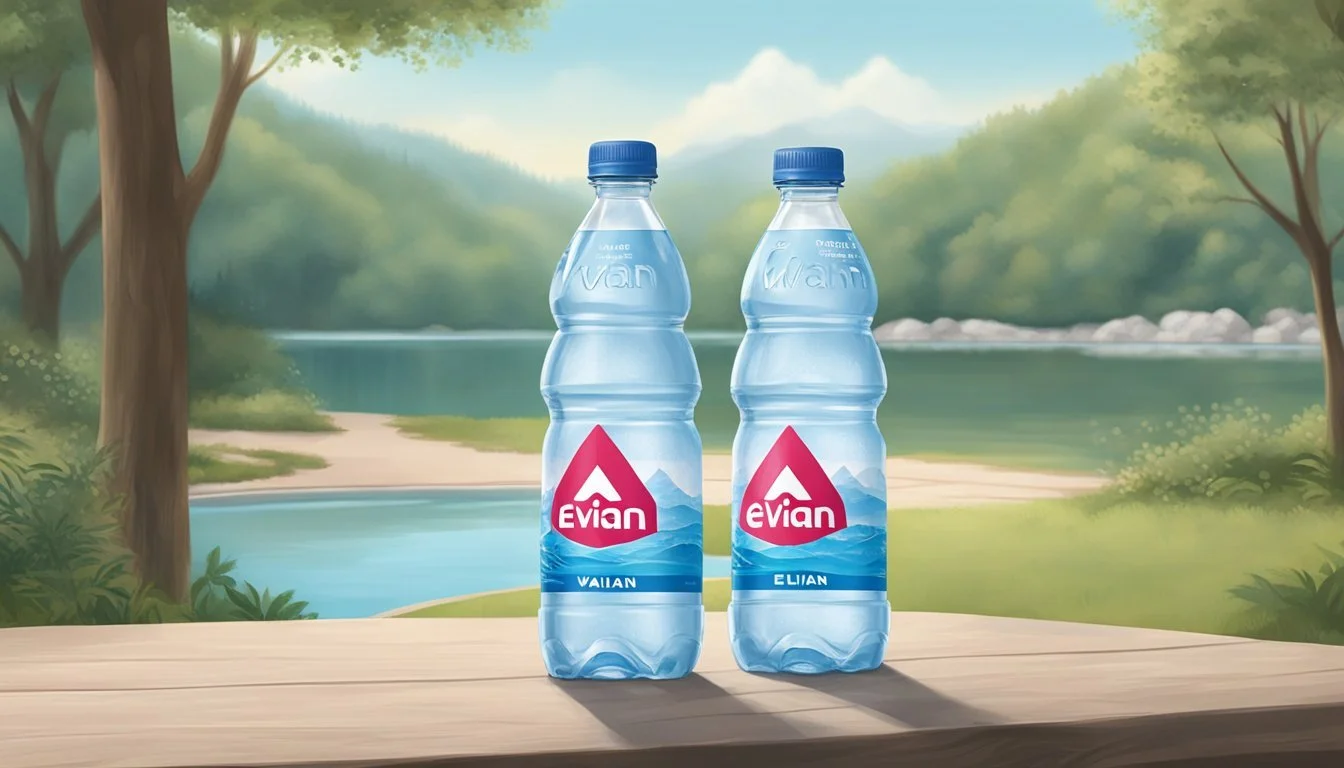Arrowhead vs. Evian
Comparing Quality and Taste in Bottled Water Brands
In the vast market of bottled water, consumers are often faced with a plethora of choices, each brand touting its unique benefits and sources. Arrowhead and Evian stand out as prominent names within this competitive industry. Arrowhead sources its water from mountain springs primarily located in the western United States and Canada. It aims to provide a low-cost option to the mass market. Evian, on the other hand, heralds from the French Alps and is globally recognized for its mineral-rich composition.
Both brands carry their distinct geographical identities and have cultivated loyal customer bases. Arrowhead's appeal lies in its accessibility and affordability, while Evian is often associated with premium quality and has positioned itself as a luxury product. The stark differences between their market positioning, source origins, and price points make for an intriguing comparison.
The question of which bottled water is better does not yield a simple answer, as preferences are subjective and can hinge on factors like taste, purity, mineral content, and packaging. Consumers who prize natural spring water from recognizable domestic sources might lean towards Arrowhead, while those who value imported water with a high mineral content could prefer Evian. Deciding between the two ultimately depends on individual priorities and values concerning what constitutes the superior bottled water experience.
Understanding Bottled Water
The evaluation of bottled water brands often involves considering the type of water, regulatory standards, and the environmental footprint they leave behind. This section explores these aspects in the context of brands like Arrowhead and Evian.
Types of Bottled Water
Bottled water comes in various forms, differentiating by source and treatment process. Tap water is municipal water that has been treated and disinfected to make it safe for consumption. In contrast, bottled water is packaged and often sourced from springs or other protected sources. Mineral water contains natural minerals and trace elements and must be sourced from a geologically and physically protected underground water source. It cannot be subjected to any treatment that would alter its original composition. On the other end, purified water has been processed to remove chemicals and contaminants, which involves methods like reverse osmosis or distillation. Distilled water is a type of purified water that has been boiled into vapor and condensed back into liquid in a separate container, removing minerals and impurities.
Bottled Water Regulation
Regulatory bodies ensure bottled water quality and safety. In the United States, the Environmental Protection Agency (EPA) regulates tap water, while the Food and Drug Administration (FDA) oversees bottled water. They enforce standards for a wide range of substances, from microbiological to chemical contaminants. The FDA categorizes bottled water under different standards, like spring water, mineral water, or distilled water, each with specific requirements. For instance, mineral water must contain at least 250 parts per million total dissolved solids. Moreover, the pH levels of bottled water can vary. Neutral water has a pH of 7, while many bottled waters range from slightly acidic to slightly alkaline on the pH scale.
Environmental Impact
The bottled water industry's environmental impact is significant due to the production and disposal of plastic bottles and the carbon footprint of transportation. The choice between brands like Arrowhead, which sources water from mountain springs in the U.S., and Evian, which is sourced from springs in France, factors into this impact. To reduce environmental harm, companies are investing in recycled materials for their bottles and more efficient water sourcing. Consumers gravitate towards brands that show a commitment to sustainability through eco-friendly practices and reduced plastic usage.
Comparing Arrowhead and Evian
In examining Arrowhead and Evian bottled waters, the discussion will focus on details such as brand history, source origins, and sustainability practices.
Brand Overview
Arrowhead is known for its range of water products sourced from multiple mountain springs in the western U.S. and Canada. Although a more affordable and mass-produced option, Arrowhead has an established market presence. Evian, on the other hand, is a premium brand hailing from Évian-les-Bains, France. The source's unique geological origins contribute to Evian’s international recognition and distinct branding as a luxury water.
Water Sources
Arrowhead's water is sourced from 13 different mountain springs across North America, appealing to those who prioritize a domestic product. Evian originates from a single natural spring in the French Alps and is globally known for this exclusive source, which is valued for its mineral composition and untouched purity.
Filtration and Purity
Both brands emphasize natural filtration; however, they approach the process differently. The water from Arrowhead's springs undergoes natural filtration as well as quality assurance measures, including reverse osmosis, to meet regulations. Conversely, Evian undergoes a unique filtration process over 15 years as it percolates through glacial sand, which naturally endows the water with electrolytes and a balanced mineral content without artificial purification.
Taste Profile
The taste of water is influenced largely by its mineral content. Arrowhead maintains a typical, clean taste that is expected from natural spring water. On the other hand, Evian is characterized by a smooth and distinct taste due to its rich mineral blend, including calcium and magnesium, contributing to the brand's upmarket positioning.
Packaging and Sustainability
Arrowhead offers various packaging, including plastic bottles, which are often criticized for environmental concerns. The brand endeavors to use recycled materials and is working towards more sustainable practices. Evian presents their product in both glass and plastic bottles, with a commitment to being carbon neutral and aspirations for all of their plastic bottles to be made from 100% recycled materials by 2025, underlining a strong emphasis on environmental responsibility.
Both Arrowhead and Evian showcase distinctive qualities appealing to different consumer bases—one offering a more budget-conscious choice with widespread availability, the other presenting a premium option with a commitment to environmental sustainability and a unique mineral balance.
Health and Hydration
When comparing Arrowhead and Evian bottled waters, one should consider both brands offer hydration benefits, but they differ in their mineral content and potential health impacts.
Hydration Benefits
Hydration is crucial for maintaining bodily functions, and both Arrowhead and Evian bottled waters provide adequate hydration. They serve the basic purpose of replenishing fluids in the body to support overall health, including digestion, circulation, and temperature regulation.
Mineral Content and Health
The mineral content of bottled water is a significant aspect of its health benefits. Electrolytes such as sodium, potassium, calcium, and magnesium contribute to hydration by maintaining fluid balance within the cells.
Evian is renowned for its naturally occurring electrolyte and mineral content, which includes calcium and magnesium beneficial for bone health and metabolic functions.
Mineral Content in Evian Calcium 80 mg/L Magnesium 26 mg/L
Arrowhead, sourced from mountain springs, also contains natural minerals. However, the mineral content can vary significantly depending on the source.
Mineral Content in Arrowhead (average) Calcium 13.5 mg/L Magnesium 1 mg/L
In terms of mineral benefits for health, Evian has a higher concentration, which might suggest an edge over Arrowhead in contributing to the daily recommended intake of these essential nutrients.
Consumer Experience
When evaluating consumer experience with Arrowhead and Evian bottled waters, key considerations often include the ease of obtaining the product and the price point in comparison to the perceived value.
Availability and Accessibility
Arrowhead, a brand often found in grocery stores across the western United States, benefits from a reputation of widespread distribution at regional levels. It sources its water from mountain springs, which may contribute to its presence in North American retail locations. Evian, however, is a globally recognized brand known for its origin from the Alps and enjoys international availability. While Arrowhead might be more easily accessible in the U.S., Evian is typically found in numerous countries and is often stocked by high-end retailers and hospitality establishments.
Grocery Stores and Retailers:
Arrowhead: Regularly available across various chains, especially in the United States.
Evian: Found domestically and globally, positioned in both standard and premium outlets.
Cost Comparison
When it comes to cost, Arrowhead generally positions itself as a more budget-friendly option, which is attractive to consumers looking for safe, quality drinking water without a high price tag. Evian is typically priced at a premium, reflecting its branding as a high-end product and one of the best water experiences on offer.
Price Points:
Arrowhead: Economical, often sold in bulk for added savings.
Evian: Higher-priced, marketed as a luxury product with a distinctive taste and quality.
The cost difference mirrors the market positioning of each brand, with Arrowhead catering to cost-conscious consumers and Evian appealing to those who prioritize premium attributes in bottled water.
Expert Opinions and Rankings
In the realm of bottled waters, Arrowhead and Evian are recognized by consumers and experts for distinct qualities. This section analyzes their standings based on professional taste evaluators and industry rankings.
Water Sommelier Insights
Experts in water tasting, known as water sommeliers, have commented on the profiles of both Arrowhead and Evian. They note that Arrowhead, sourced from springs across the western U.S., tends to have a neutral flavor profile that might lack the distinctive mineral content some consumers seek. Evian, on the other hand, emerges from the French Alps and is often distinguished by its naturally occurring electrolytes and minerals, which contribute to its taste and mouthfeel.
A comparison table based on water sommelier insights:
Aspect Arrowhead Evian Source Various mountain springs in the U.S. French Alps Taste Neutral Characteristic mineral content Mouthfeel Standard Balanced, potentially smoother Mineral Content Lower mineral content Rich in naturally occurring minerals Expert Preference Less preferred by some sommeliers Often praised for its taste and purity
It is essential to mention that the preference for a particular brand of bottled water can be subjective, influenced by individual tastes and the specific palate of the water sommelier.
Final Thoughts
When comparing Arrowhead and Evian bottled waters, consumers often consider factors such as purity, taste, and source sustainability. Arrowhead is sourced from mountain springs across the western United States and Canada. Its affordability and availability make it a common choice. Despite its origins, some find Arrowhead's taste to be less remarkable compared to other brands.
On the other hand, Evian is sourced from the French Alps and is globally recognized. It is often praised for its mineral composition and clean taste, which reflect its natural Alpine source. Its electrolyte content and balanced pH contribute to a desirable flavor profile, positioning it as a premium choice in the bottled water market.
Arrowhead:
Source: Mountain springs in the U.S. and Canada
Pricing: Affordable
Taste: Standard
Evian:
Source: French Alps
Pricing: Premium
Taste: Clean and mineral-rich
Consumers looking for clean drinking water can expect both brands to meet safety standards, although Evian's pristine Alpine source may impart a slight edge in perceived quality. The choice between Arrowhead and Evian ultimately depends on personal preference, budget, and priority given to factors like taste and source reputation.
When discussing the best water, it is crucial to consider individual requirements for hydration and whether the added minerals or the source reputation justify a potentially higher cost. Each brand has its unique attributes, and taste tests often reveal a subjective winner.






